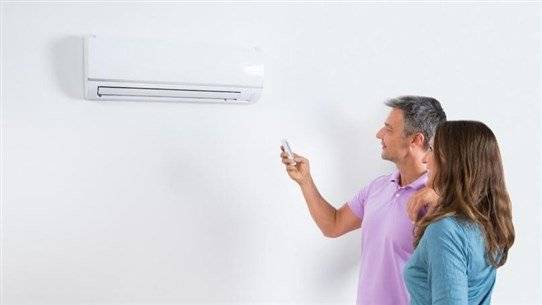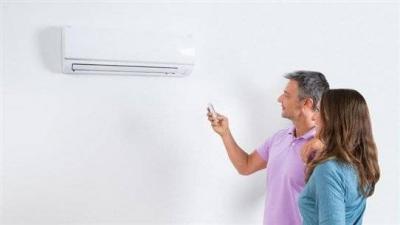In Lebanon, "cooling" has become a luxury that is hard to attain. If electricity is available, its cost becomes "burning," a situation many are trying to avoid as they switch from neighborhood generators to solar power systems paid in cash. However, their situation may not be much better, as it depends on the cost of solar systems capable of running air conditioners during the day and the ability to purchase storage capacity to power them at night. All indications suggest that a severe electricity crisis is looming this summer. The supply of Iraqi fuel is nearing depletion. The process of importing gas and electricity from Egypt and Jordan has not yet been completed, despite ongoing efforts, as this matter is largely tied to the maritime border demarcation issues and the pressures being exerted on Lebanon in this regard. Compounding the crisis is the rise in fuel prices due to the repercussions of the Russian-Ukrainian war, which has led to a sharp increase in generator bills and has forced a growing number of subscribers to cancel their subscriptions.
Given these circumstances, discussing the cost of "air conditioning" or "cooling" is akin to talking about the utmost luxury. It is a privilege that can be dispensed with when compared to the basic needs that Lebanese people strive to afford, such as food, fuel, medical expenses, and education costs. But is luxury defined in relation to per capita income in a country where residents are accustomed to a stable exchange rate and uninterrupted consumption?
Air conditioners are among the most energy-consuming electrical appliances. "A small 9000 BTU air conditioner consumes between 2 and 5 Amperes depending on the quality of its manufacture. Older air conditioners consume more energy compared to modern inverter models, which do not consume more than 2 Amperes. The air conditioner uses most of the energy to reach the desired temperature. The time required to achieve this temperature is linked to several factors, including room size, its temperature, and the outside temperature," explains Youssef Akiki, an air conditioning installation specialist. Therefore, with the constant power outages and the reliance of most citizens on generators, a single air conditioner can drain nearly all or complete capacity from a 5 Ampere meter, leaving less than one Ampere or even none for other household needs. This reality affects most subscribers to generators who are dependent on 5 Ampere meters, especially since many have had to reduce their meter capacity and are now relying on only 3 Amperes to ensure a minimum of lighting in their homes in an effort to reduce the high generator bills.
Mathematically, the maximum power that a 5 Ampere disconnect can handle is about 1 kilowatt per hour. Assuming there is a possibility to run a small air conditioner for 8 hours daily on the generator (except for post-midnight hours subject to generator rationing), the monthly cost of the air conditioner based on the Ministry of Energy’s rates for the second half of May (12,586 Lebanese Lira per kilowatt-hour) would reach 3 million Lira (8x30x12,586) excluding the monthly meter fee, for subscribers with meters at altitudes below 700 meters. For those living at higher altitudes, the cost of running the air conditioner could reach about 3 million 320 thousand Lira, excluding the meter fee (the cost per kilowatt for those living at this altitude is 13,825 Lira). For subscribers with larger meters, this would mean effectively doubling the bill since the small air conditioner alone consumes half of the energy in the case of a 10 Ampere meter.
But what about solar energy, which has become the optimal choice for Lebanese people who can afford its costs? Is it sufficient to cover basic household needs and run air conditioners at the same time? Bassam Karam, the director of the Smart Power program for solar energy installation, clarifies that "solar energy production must meet two essential needs: providing the required consumption during power outages and storing excess energy to charge batteries for use during nighttime. If the size of the system used is sufficient to meet basic needs, one can use the air conditioner during the day. The problem lies in nighttime hours and sleeping times when generator services are rationed after midnight, as air conditioners pose a significant challenge to batteries, which will ultimately suffer faster whether they are Lead Acid or Lithium."
He points out that "a 5 Ampere solar power system is enough to meet basic household energy needs, but without an air conditioner even during the daytime. A small 9000 BTU air conditioner consumes between 4 to 5 Amperes, and consequently, running such an air conditioner in addition to the basic household needs, which consume between 2 to 3 Amperes, requires a solar system of at least 10 Amperes. Note that a system of this size does not leave excess energy for nighttime storage and allows for operating the air conditioner only during the day." Regarding the performance and type of batteries that may allow for running the air conditioner at night if they are of the more advanced Lithium type, Karam explains that "a standard Lithium battery provides 7.5 kilowatts, but the usable energy from it should not exceed 80%, equating to 6 kilowatts. Thus, if the air conditioner is not used, it can provide between 10 to 12 hours of power supply during the night. However, if a small air conditioner without an inverter system is used at night (despite it being recommended not to operate air conditioners using stored battery power), the power supply from the battery will not exceed 5 hours before it depletes. This means that those wishing to use the air conditioner at night will need to purchase an additional battery, which necessitates resizing the system and increasing the number of panels for battery charging." Regarding the cost of a solar power system of 10 Amperes, Karam estimates it to be around $5,000 in cash.




